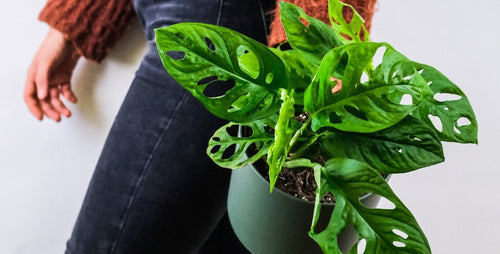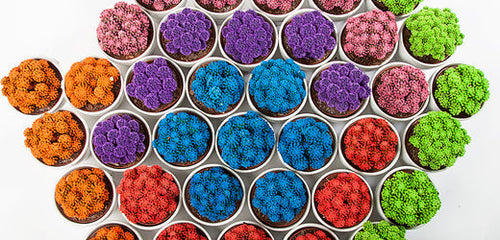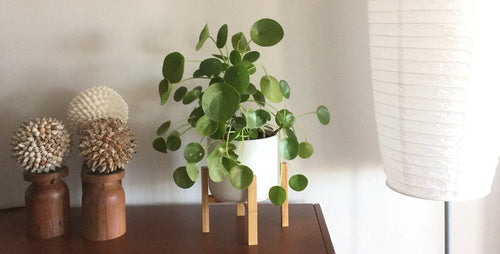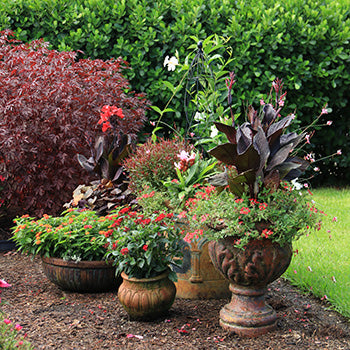By Karen Weir-Jimerson
If you like unusual houseplants for terrariums or stand-alone plants that are conversation (and Instagram) worthy, then you need to take a closer look at the exotic members of the Pilea family.
Native to South and Central America, this diverse family of more than 700 species has one common characteristic: uniqueness. If you like metallic splashes of color, knubbly leaf texture, and interesting leaf/stem arrangement (like the spacy Pilea peppermoides), then take a deep dive into this remarkable plant group.

Heavy metal coloration
A number of pilea varieties display metal colors, such as bronze and silver. For example, Aluminum plant (Pilea cadierei minima) earns its common name because its green leaves feature stripes of silver variegation.‘Silver Tree’ pilea (Pilea spruceana 'Silver Tree') has lovely bronze-color leaves that are streaked with silver. Norfolk Friendship plant (Pilea spruceana ‘Norfolk’) produces lovely bronze-brown leaves that are striped in silver.

Textural leaves
There are pilea varieties that draw attention because of their deeply textural leaves. ‘Moon Valley’ pilea has deep cratered green leaves (hence the name) that are flushed with reddish purple. And the leaves of ‘Dark Mystery’ pilea features distinctive saw-toothed edges.
Shapely leaves
Pileas offer lots of different leaf shapes. The quirky Pilea Sharing Plant™ (Pilea peperomioides) features perfectly round leaves that look like little lily pads. Artillery plant has tiny leaves. This plant’s Latin name is Pilea microphylla; microphylla means “small leaves.” Other pilea varieties, such as Aluminum plant pilea feature flat almond-shape leaves.
Terrarium plants, dish gardens, hanging plants
Other pileas grow in a variety of plant forms which makes them adaptable for specialty projects such as terrariums or dish gardens. Artillery plant (Pilea microphylla) is small in stature with tiny green leaves.. Or try Glauca pilea (Pilea libanensis or Pilea glauca) which can be a groundcover or hanging plant; it has small green leaves with a silvery-blue sheen.

Shopping for pilea
Look for plants with healthy firm leaves and stems. Avoid plants with yellow leaves which may have been over or under watered.
Pilea traits
Although many of the different varieties of pilea look very different from one another, they are easy to grow. These plants are generally slow growing which makes them ideal for terrariums or other small-space uses. Here are some other elements of caring for pilea that you need to know:
Pilea Care Light
Regardless of their leaf shape, texture, or color, peperomia do best in medium light. This means they like filtered light from west- or east-facing windows. You can try them in higher or lower lighting, and they may do fine.
Water
Pileas like most houseplants, don’t like to be overwatered. Too much hydration can cause their roots to rot in wet soil. Do a soil moisture test with your finger; wiggle a finger into the soil down about an inch. If it is dry, it’s time to water. Avoid watering the leaves; instead, direct water at the base of the plant. For easy watering in a single pot, use a Wick & Grow ™ system which waters from the bottom of the plant, allowing the plant to wick up water as it needs it.
Temperature
Pilea prefers temperatures between 60 and 80 degrees F. Keep plants away from cool drafts from doors and windows or hot blasts from heating vents or fireplaces.
Fertilizer
To keep plants healthy, feed with houseplant food in the spring and summer. Follow application directions. Don’t over feed.
To take a look at all the pilea varieties, click here.

















